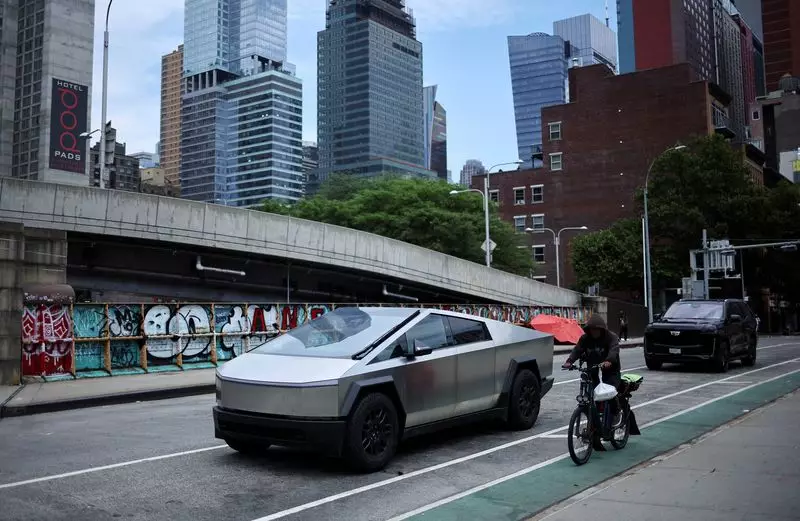In the realm of electric vehicles, few announcements have stirred as much excitement as the rollout of Tesla’s Cybertruck. After a protracted development timeline, which spanned four years, the eagerly awaited vehicle fell short of expectations with deliveries amounting to only about 15,000 units in the fourth quarter. Throughout the year, estimates suggest a total of only 35,000 to 40,000 vehicles rolled out into the market, contrasting sharply with Tesla’s earlier claims of having received around 2 million orders. This disparity has left many questioning whether the Cybertruck can be perceived as a significant success or if it is, in fact, a miscalculation on Tesla’s part.
Analysts from Bernstein have voiced concerns about the financial viability of the Cybertruck, suggesting that it is not currently generating a gross margin that would make it attractive to stakeholders. The striking reality of declining profitability paired with niche demand raises flags; this leads to speculation about the truck’s long-term sustainability in an increasingly competitive market. It’s noteworthy that the resources devoted to developing the Cybertruck could have been allocated toward creating more affordable models, which could better address Tesla’s perceived need for cost-effective electric vehicles in lieu of luxury products.
The automotive landscape has shifted substantially, with manufacturers facing pressure to offer competitive pricing. Tesla’s aggressive strategy behind price reductions and financing incentives has notably affected its auto gross margins, which are now projected to dwindle below 15%. This decline poses risks for Tesla, as it lags behind several competitors in both the U.S. and European markets, with only Ford showing similar challenges amidst a downturn in profitability. The long-term implications could see Tesla struggling to maintain a competitive edge as rivals enhance their own offerings.
Beyond the Cybertruck, concerns also arise regarding Tesla’s ambitions in the robotaxi sector. The company’s push to lead in autonomous driving technology appears ambitious but not without its challenges. Bernstein analysts emphasize the limitations within Tesla’s current sensor suite, alongside a host of potential legal barriers that can impede rapid innovation. While there is hope that achieving Level 5 autonomy may position Tesla favorably in the market, there are doubts surrounding the company’s capability to retain its lead against formidable competitors such as Waymo.
As we survey the landscape surrounding Tesla and the Cybertruck, it becomes increasingly apparent that the company faces a crossroads. The disappointing numbers, coupled with profitability concerns and competitive pressures, paint a challenging picture for the electric vehicle giant. With an annual earnings forecast showing a decline, it is clear that Tesla must regroup and potentially recalibrate its strategies if it hopes to reclaim its foothold in the rapidly evolving automotive market. As the world of electric vehicles continues to diversify, the pressure for Tesla to innovate meaningfully remains ever-present.

